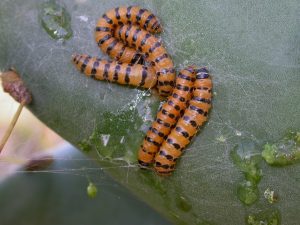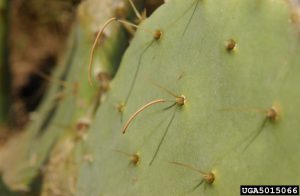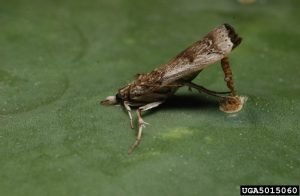Did you know that Florida is home to several species of native cacti? Its true! The prickly pear cactus (Opuntia spp.) produces edible fruit with flowers that bloom a variety of warm-toned colors. These cacti also serve as important nutrient resources for a variety of animals and pollinators including native and non-native bees, butterflies, and moths. Furthermore, prickly pear cacti are an important agricultural staple for many, particularly for the production of nopales in Latin American cuisine.

The cactus moth (Cactoblastis cactorum) is a serious threat to Opuntia species in North America. Native to South America, this moth was introduced from Argentina to Australia in 1925 as a biocontrol agent to aid in managing the spread of Opuntia cacti across Australian landscapes. As this biocontrol effort was highly successful, the cactus moth was later introduced in Hawaii, South Africa, India, and a handful of Caribbean islands for the same purpose.

First discovered in the Florida keys in 1989, the cactus moth has rapidly spread along the U.S. Atlantic and Gulf coasts with current records as far north as Charleston, South Carolina and as far west as Texas. The cactus moth damages cacti while feeding in the larval, or caterpillar form. Larvae will burrow within the cactus paddle and feed until the paddle is completely hollow. Adult cactus moths are a fairly nondescript brown to gray color and larva are the primary stage for identification. The larva are bright orangish-red with large dark spots forming transverse bands. Another helpful sign of this pest is the “egg sticks” that adult females deposit on the surface of cactus paddles.

There is currently no method of successful chemical control for the cactus moth. Rather, efforts have been primarily focused on quarantine, intensive sanitation of infested materials, biological control, and sterile insect release. Sterile insect technique efforts were abandoned in 2012, and researchers are actively working on how to best manage this voracious pest.
Be sure to check out the following links for more information: Successful area-wide programme that eradicated outbreaks of the invasive cactus moth in Mexico, FDACS-DPI: Argentine cactus moth biological control, EDIS: Cactus Moth, Cactoblastis cactorum (Berg) (Insecta: Lepidoptera: Pyralidae).
Source: UF/IFAS Pest Alert



